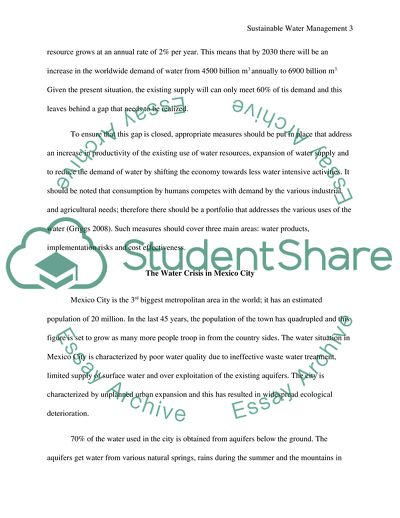Cite this document
(Sustainable Water Management Assignment Example | Topics and Well Written Essays - 2500 words, n.d.)
Sustainable Water Management Assignment Example | Topics and Well Written Essays - 2500 words. https://studentshare.org/environmental-studies/1819849-sustainable-water-management-iin-mexico-city-problem-and-solutions
Sustainable Water Management Assignment Example | Topics and Well Written Essays - 2500 words. https://studentshare.org/environmental-studies/1819849-sustainable-water-management-iin-mexico-city-problem-and-solutions
(Sustainable Water Management Assignment Example | Topics and Well Written Essays - 2500 Words)
Sustainable Water Management Assignment Example | Topics and Well Written Essays - 2500 Words. https://studentshare.org/environmental-studies/1819849-sustainable-water-management-iin-mexico-city-problem-and-solutions.
Sustainable Water Management Assignment Example | Topics and Well Written Essays - 2500 Words. https://studentshare.org/environmental-studies/1819849-sustainable-water-management-iin-mexico-city-problem-and-solutions.
“Sustainable Water Management Assignment Example | Topics and Well Written Essays - 2500 Words”. https://studentshare.org/environmental-studies/1819849-sustainable-water-management-iin-mexico-city-problem-and-solutions.


